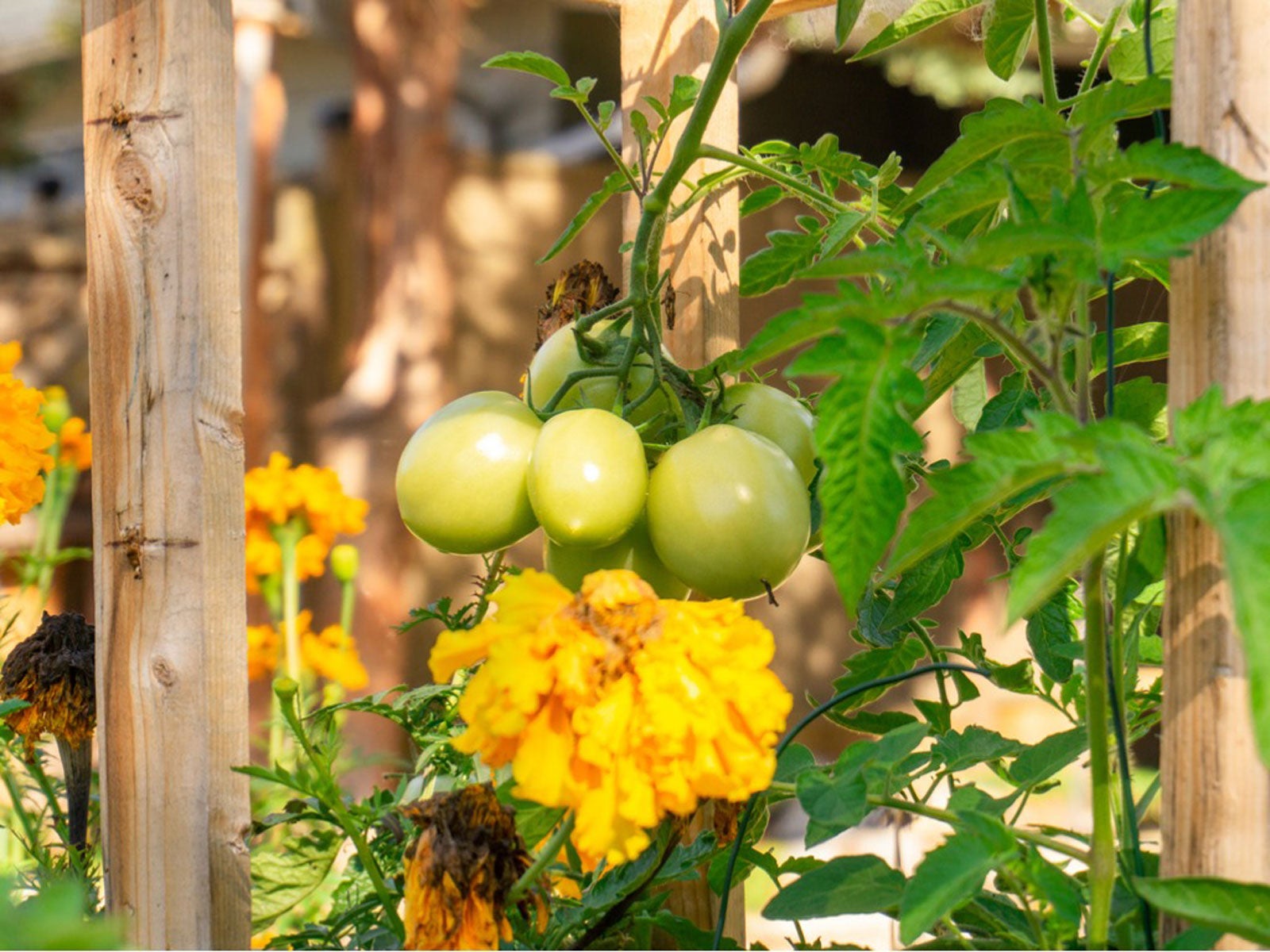Potted Veggies And Flowers – Growing Food Crops With Ornamentals


There’s absolutely no good reason not to grow food crops with ornamentals. In fact, some edible plants have such pretty foliage, you may as well show it off. As an added bonus, blooming plants attract bees and other pollinators to your veggies. Due to their flexibility, you can even grow them indoors, making it possible to enjoy both beauty and crops through winter.
Growing mixed ornamental and edible containers actually makes a lot of sense. It’s an efficient way to grow edible plants without building raised beds or plowing up the lawn for a garden patch. However, growing vegetables and flowers in pots does require a bit of planning. Here are some tips on growing potted veggies and flowers to get you started.
Ornamental and Edible Containers
It’s essential to consider each plant’s growing conditions before you grow food crops with ornamentals. For instance, don’t combine sun-loving plants like marigolds, eggplant, lavender, or tomatoes with leafy greens, Hosta, ferns, or impatiens. Similarly, don’t locate drought-tolerant plants like gazania or rudbeckia with moisture-loving plants such as dahlias, broccoli, or Brussels sprouts.
Pay careful attention to watering. All plants in pots, including drought-tolerant plants, dry out faster than those planted in the ground. Some may need watering daily during the peak of summer. Whatever you grow, be sure the pot has at least one drainage hole.
Growing Food Crops with Ornamentals
Here are examples of using vegetables with pretty foliage:
- Garlic is good for planting with full-sun ornamentals. You can also plant chives, another member of the allium family. Chives are attractive plants with small lavender blooms.
- Swiss chard has colorful stems and big, ruffly leaves, often with bright red veins. For even more color, try rainbow chard, available with stems of red, orange, yellow, hot pink, and white. Beets are members of the same plant family, and they also have big, bold leaves. Be sure the pot is deep enough to accommodate the roots.
- Ruffled parsley or red lettuce will provide color and texture to a pot of annuals. Kale has colorful, crinkly leaves that taste even sweeter after they’ve been nipped by frost. Dinosaur kale, with dark bluish green or black leaves, is a real showstopper when planted in potted veggies and flowers.
Tomatoes happily share the container with annuals, but full-size tomatoes tend to be container hogs. You might have better luck with smaller, patio-type tomatoes.
Sign up for the Gardening Know How newsletter today and receive a free copy of our e-book "How to Grow Delicious Tomatoes".

A Credentialed Garden Writer, Mary H. Dyer was with Gardening Know How in the very beginning, publishing articles as early as 2007.